Types Of Mechanical Keyboards

What makes a mechanical keyboard a
mechanical keyboard?
Well, there are a couple significant differences that
specifically mechanical keyboards have over your
standard rubber dome keyboard.
1. Mechanical keyboards do not require a key to be
fully depressed, or bottom out, in order to actuate.
Most use some sort of mechanism that allows the
circuit to complete before the key is fully depressed,
resulting in less force exerted on the fingers, as
well as a significant increase in typing speed for
those who have trained with lighter key actuation
force.
3. Mechanical are often much more durable than rubber
dome keyboards. Rubber domes degrade overtime and are
unserviceable when a key no longer functions. However,
mechanical keyboards are often made with discreet
modules or standardized parts which were designed to
be replaced. Also, due to the properties of the
materials being used (plastic and metal vs rubber),
they degrade at a much slower rate. Rubber domes last
about 10 million key presses per key, but mechanical
switches often last more than 50 million key presses.
Some have even been rated up to 30 billion keypresses!
3. Mechanical keyboards come in a very wide variety of
mechanisms or switches, usually variations of one of
two designs, The Cherry MX design (the most common) or
Alps Electric design. Some make an audible sound to
notify the typist that the key has actuated, while
others have a bump that is noticed after the key has
passed the actuation point. Other switches use rubber
to muffle the sound and use grease to ensure the
plastic on plastic surfaces don't have a scratchy
noise for a silent experience. Its quite staggering
the number of different switches out there.
So, for simplicity's sake, we will focus on three
different types of mechanisms: The Cherry MX switch,
the Alps Electric SKCM switch, and IBM Buckling Spring
switch.
Cherry MX Switches
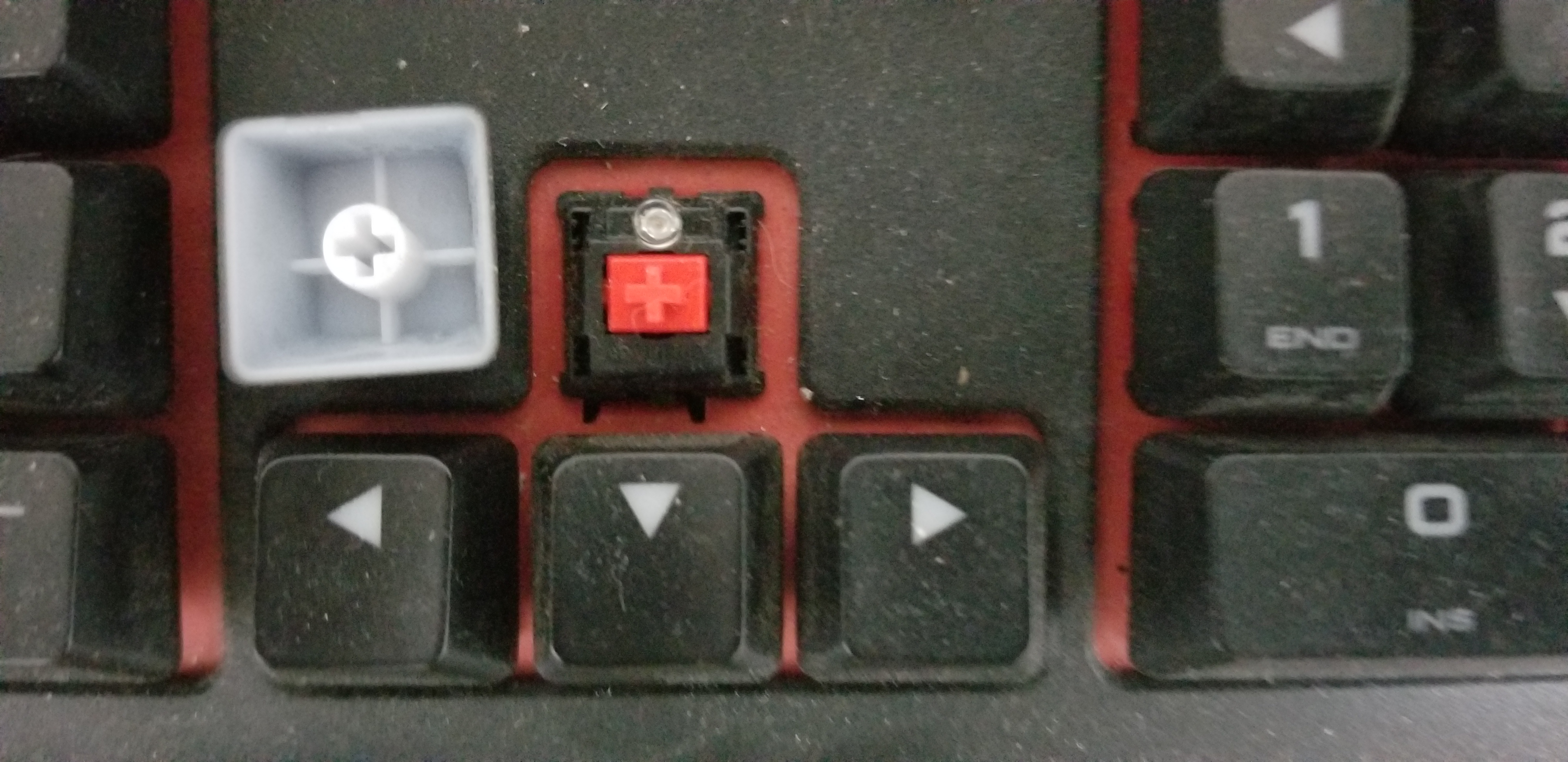
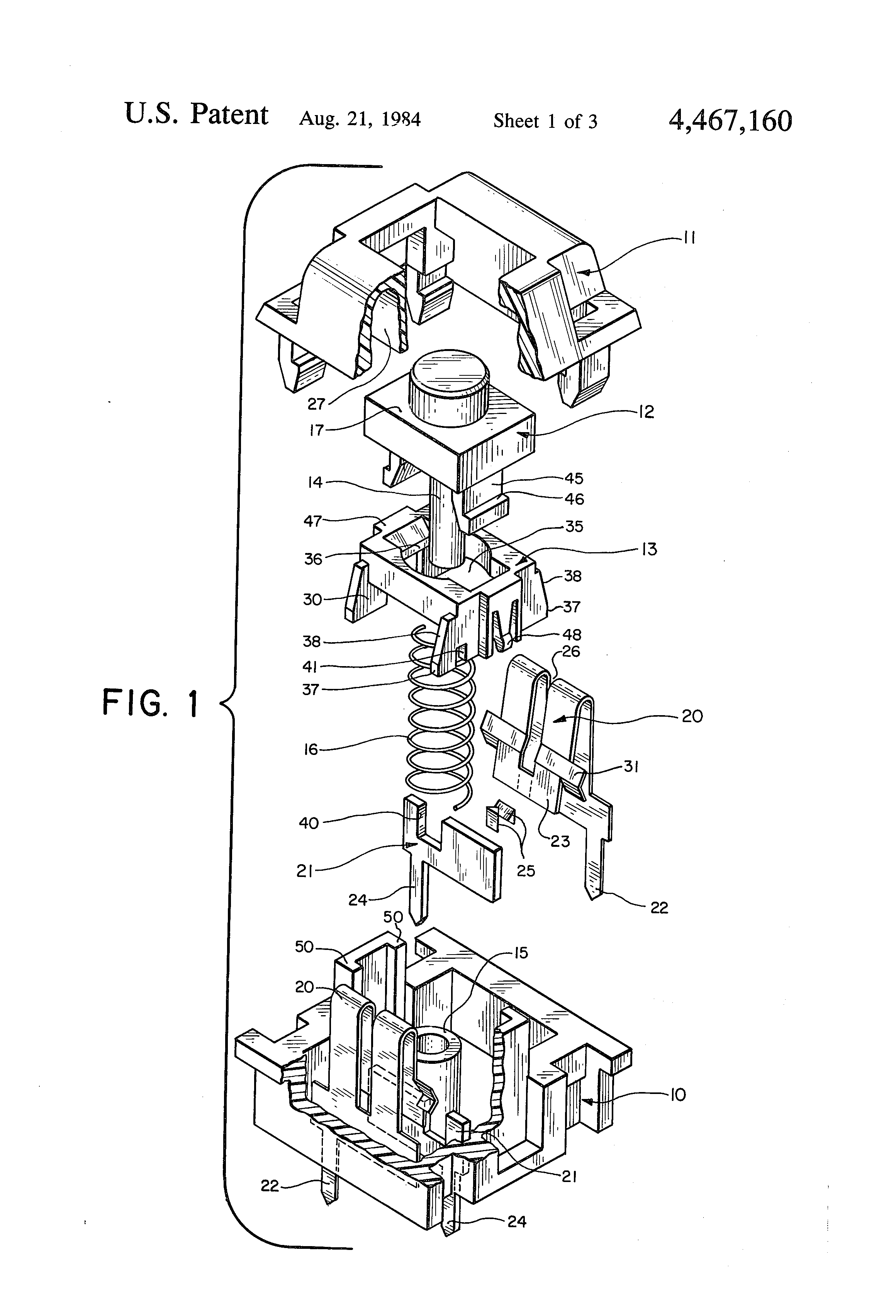
US Patent 4467160A
This is what is commonly referred to as
the Cherry MX switch. If you were to go
buy a "mechanical keyboard" or "gaming
keyboard", chances are you would find
something that uses this switch, or at
least a derivative of its design. The
Cherry MX switch design is composed of a
couple core parts.
1.
The "keycap", the piece
of plastic that has the
letters or numbers
printed on it. Usually,
keycaps are changed for
cosmetic purposes, but
sometimes it brings
functional benefits,
such as allowing light
to pass through if there
is an LED back light.
The only real purpose
they serve is to provide
an idea of what key
executes what letter
when pressed.
2. The slider, which would serve a similar
function to the stem referred to in the
rubber dome page. However, in modern
designs, the stem is given a standardized
shape in order to replace the keycaps. The
slider may also be comprised of multiple
parts, such as the "click jacket" which is
in the above design. The "click jacket"
produces the click sound, usually after
but rarely synchronized key actuation.
3. A spring, which provides the return
force for the switch. The springs can be
weighted differently to improve actuation
speed via reduction in actuation force.
4. Metal contacts, which connect to the
PCB that the switches are attached to, as
well as provide a path for the electrical
signal to pass through.
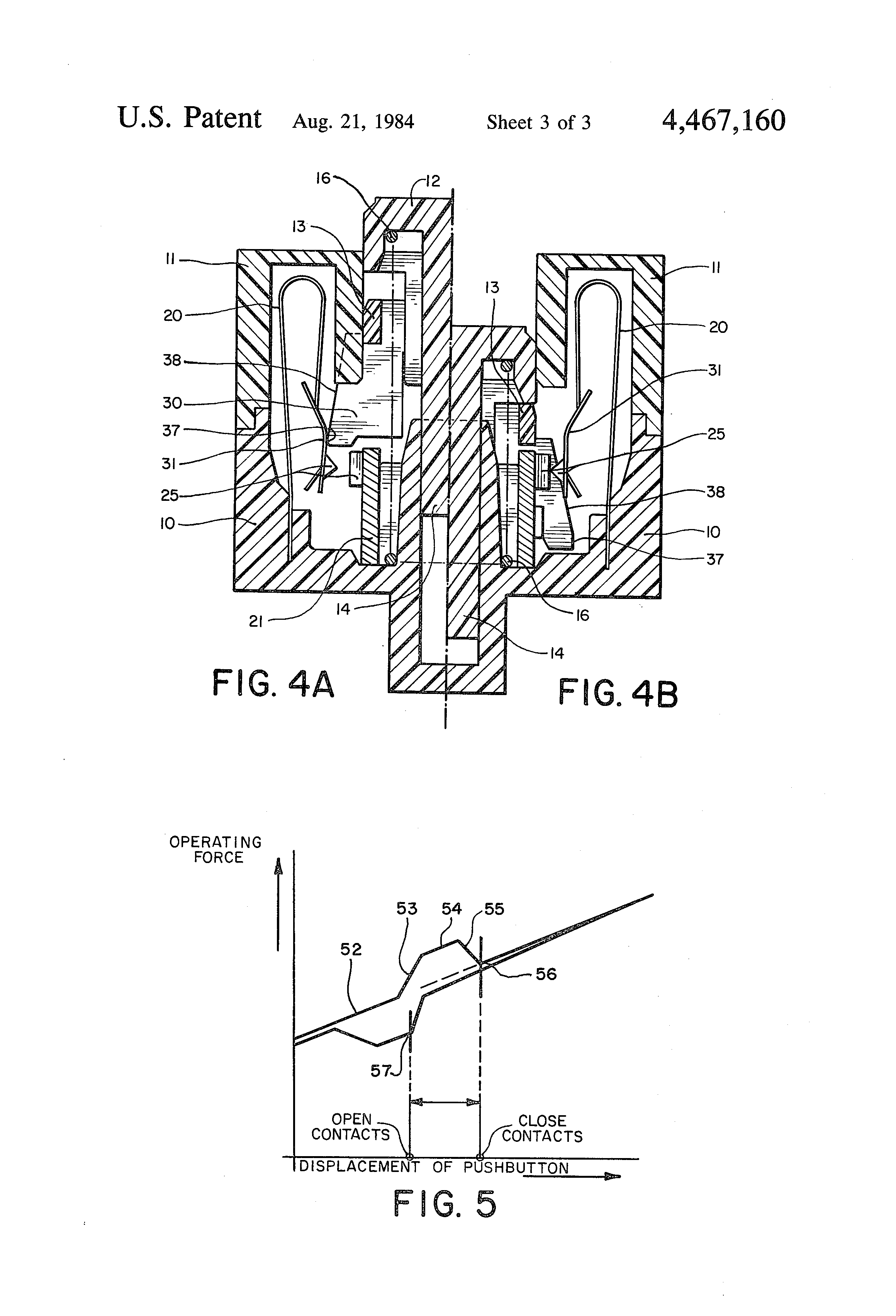
US
Patent
4467160A
So, you can
see that in
this design,
bottoming out
isn't required
for the key to
actuate. Since
the slider
redirects the
downward force
horizontally
with angled
contacts like
so:

This is pretty
significant,
seeing as
rubber domes
require
bottoming out.
This means
that the
typist is less
susceptible to
mashing the
keys and
exerting more
force than
necessary once
they are used
to the
actuation
force. While
it would take
a bit of time
to break the
habit of
bottoming out
the keys,
another
extremely
useful feature
is the "click
jacket", which
produces a
clicking noise
after a
certain amount
of force is
applied. By
associating
key actuation
with a sound
or physical
change in key
feel, the
typist is able
to improve
typing speed.However,
the more
significant
part of this
switch is the
spring! So,
unlike the
most common
keyboards,
which are
comprised of
one large
rubber dome
mat that are
not
adjustable,
Cherry MX
switches come
in several
different
configurations.
This includes
springs of
different
spring
constants!
* NOTE *:For
sake of
simplification,
keyboard
actuation
force is
generally
measured in
gram-force
(gf), so
springs are
generally
described in
terms like "55
gram weight"
or "55 gram
springs"
(Fylladitakis,
2016). This
doesn't have
to do with the
spring's
actual mass,
but rather
describes the
spring
constant in
terms that are
easier to
conceptualize
as opposed to
the typical
unit of N/kg
which usually
describes the
spring
constant per
Hooke's Law
(F= -k * x,
from Knight,
2018)). In
reality, gram
force is
somewhere
around 0.98
centi-newtons
(1 cN = 0.01
N) per 1
gram-force or
1.02 gf per 1
cN.
Calculations
are much
easier if we
assume 0.01 N
= 1
gram-force.
For example,
if we put a
spring that
requires 0.55
N to actuate,
then our ever
diligent
computer
programmer
experience(0.55
N) * (5
letters + 1
space) * (60
words per
minute) = 198
N per minute
or 3.3 N per
second
8
fingers * x +
2 fingers
*(0.5x) = 3.3
N per second
9 fingers * x
= 3.3 N per
second
x = 3.3 N per
second/ 9
fingers =
0.367 N per
finger per
second
(0.367
N per finger per second)
* (9 fingers) * (60
seconds / 1 minute) *
(60 minutes / 1 hour) *
(8 hours)
=
95,040 N or 95.04 kN per
work day
Now, while this
particular spring
results with more force
than the laptop rubber
dome calculation, this
result is still lower
than the standard
desktop rubber dome,
while also being more
consistent over time.
This is due to the
allowance of
"over-travel", or the
space between key
actuation and bottoming
out, resulting in the
fingers being cushioned
instead of running into
a stiff resistance upon
actuation, as well as
less time needed to
return the key to its
initial state to be
actuated again.
While the actuation
distance can also be
changed, from the
typical 2mm of key
travel to 1.2 mm key
travel found in some
"gaming keyboards", both
modifications serve a
similar purpose.
Springs, in fact, are
actually much easier to
replace than adjusting
the design of the metal
contacts. Some keyboard
enthusiasts even replace
each spring individually
to fit their
preferences!
However, the Cherry MX
switch is not the only
mechanism with these
advantages.
Alps SKCM Switches
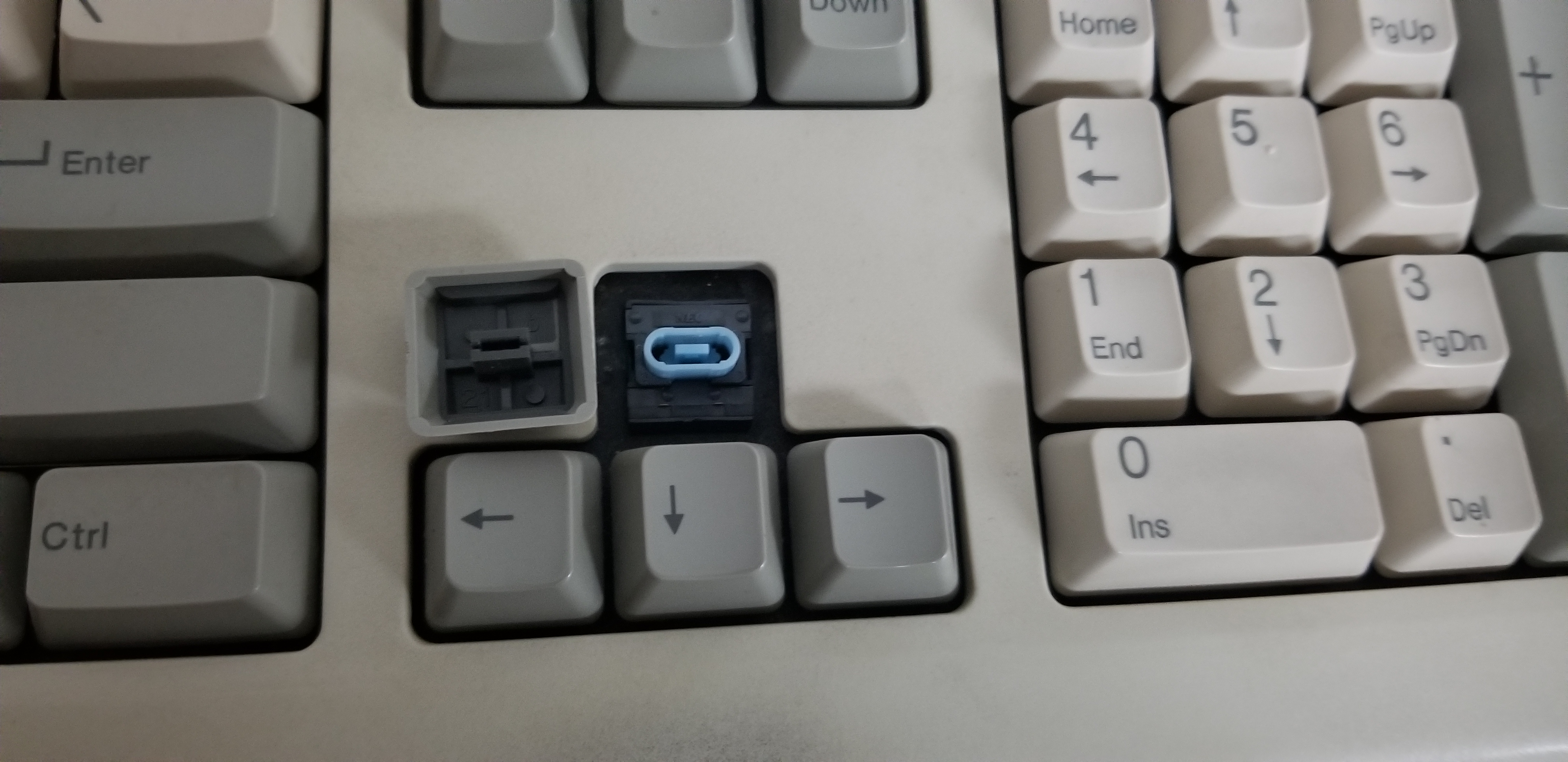
*Note*:
This is an Alps Clone switch called the NEC Blue,
which share an extremely similar mechanism.

US Patent 4642433A
The Alps design, while mechanically
different from Cherry MX switches, offers
very similar advantages and a few others
that Cherry MX lacks.
The basic parts are nearly identical,
simply having different designs, such as
the metal contacts being on the same side
of the switch housing rather than opposite
sides, or the slider being rectangular
rather than a cross point.
Lets examine that slider a bit more. Now,
while I don't have a great picture of an
actual Alps Switch slider, the very first
picture shows an Alps switch clone that
has a slider that is inspired by the Alps
switch. Notice how the stem is elongated
and has a thin plastic post in the middle.
This stem offers a key advantage over the
much thinner Cherry MX stem in that it
reduces torque like the laptop scissor
switches before.
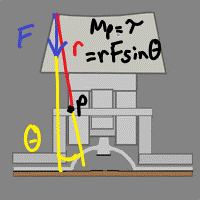
* Note *:
This is a
rubber dome
switch, but
the concept of
torque is the
same
By making
the stem
wider, torque
is reduced by
spreading the
force evenly
and directly
above the
slider,
reducing
friction.
While Cherry
MX tends to
have less
friction than
rubber domes,
many
enthusiasts
claim that all
MX designs
"feel
scratchy",
referencing
the uncommon
key binding
that some have
experienced
with the
switch (Fylladitakis,
2016). Modern
Cherry MX
switches
sometimes use
lubricant to
alleviate
this, while
the Alps
Switch's wider
stem and
simpler
construction,
such as using
a leaf spring
to provide
tactile
feedback along
with the click
sound rather
than a
deformation on
the slider,
seem to solve
this issue.
Check it out
below.

US
Patent 4642433A
The Alps Design was not without flaws
though. Though it was fairly easy to
service (or modify for enthusiasts), the
switch was rather sensitive, sometimes
with only a little powder rendering a
switch defunct permanently unless it was
meticulously cleaned. Despite lacking the
preference of typists, Cherry MX became
more mainstream and edged Alps Electric,
the company which owned the original Alps
Switch patent, out of the keyboard space.
The only modern Alps switches are clones.
However, there is a switch that exists
which many consider to both designs,
despite being older than both!
IBM Buckling Springs


US
Patent
4118611A

Due
to the
rotational
motion as a
result of the
buckling
spring, the
flapper
rotates rather
fast, creating
a clicking
noise once it
hits the PCB
and plastic
membrane. From
a mechanical
standpoint,
its pretty
cool how the
previous
designs
required
around 6 to 8
parts, this
one does it
with a
fraction of
the parts!
Shows how well
a simple
understanding
of physics and
design can go
a long way!
It's durable,
serviceable,
and doesn't
suffer from
the same
friction
issues from
previous
designs to to
the massive
stem
thickness. The
only real
disadvantage
was that it
was more
susceptible to
water damage
due to the
lack of liquid
drain holes.
However,
the switch was
not made as
discreet
module, as
well as being
much louder
than other
switches,
which was less
preferred by
office workers
who wanted a
quieter work
space.
Ultimately,
IBM phased out
this design in
favor of the
less expensive
and quieter
rubber domes.
It was a sad
time in
keyboard
history, but
most
definitely a
step toward
the quiet
working spaces
of today.
So,
hope fully you
learned a
little bit
about
keyboards and
physics! If
you are still
interested in
other goodies
keyboards
sometimes
have, checkout
the Extras!
page.